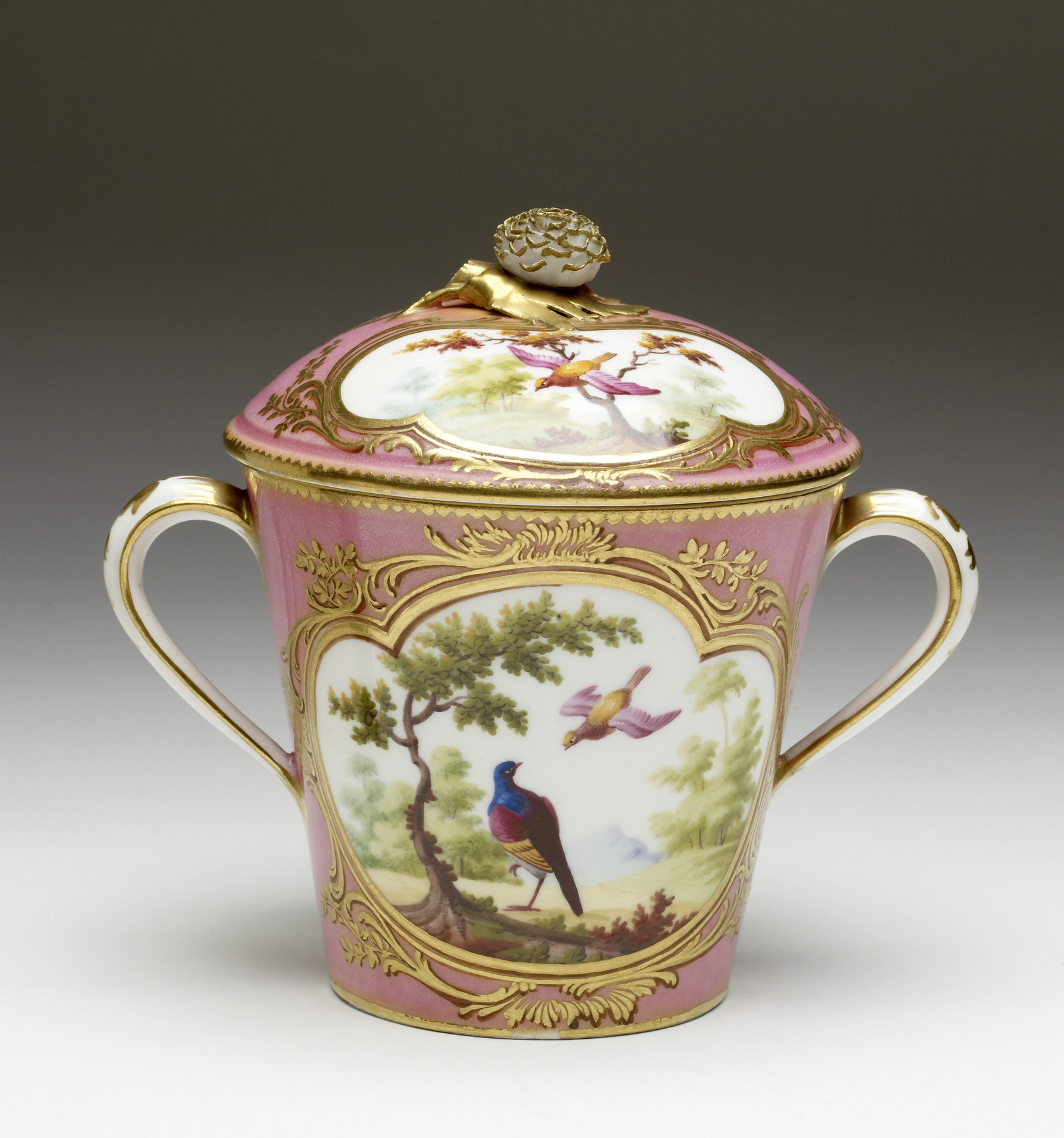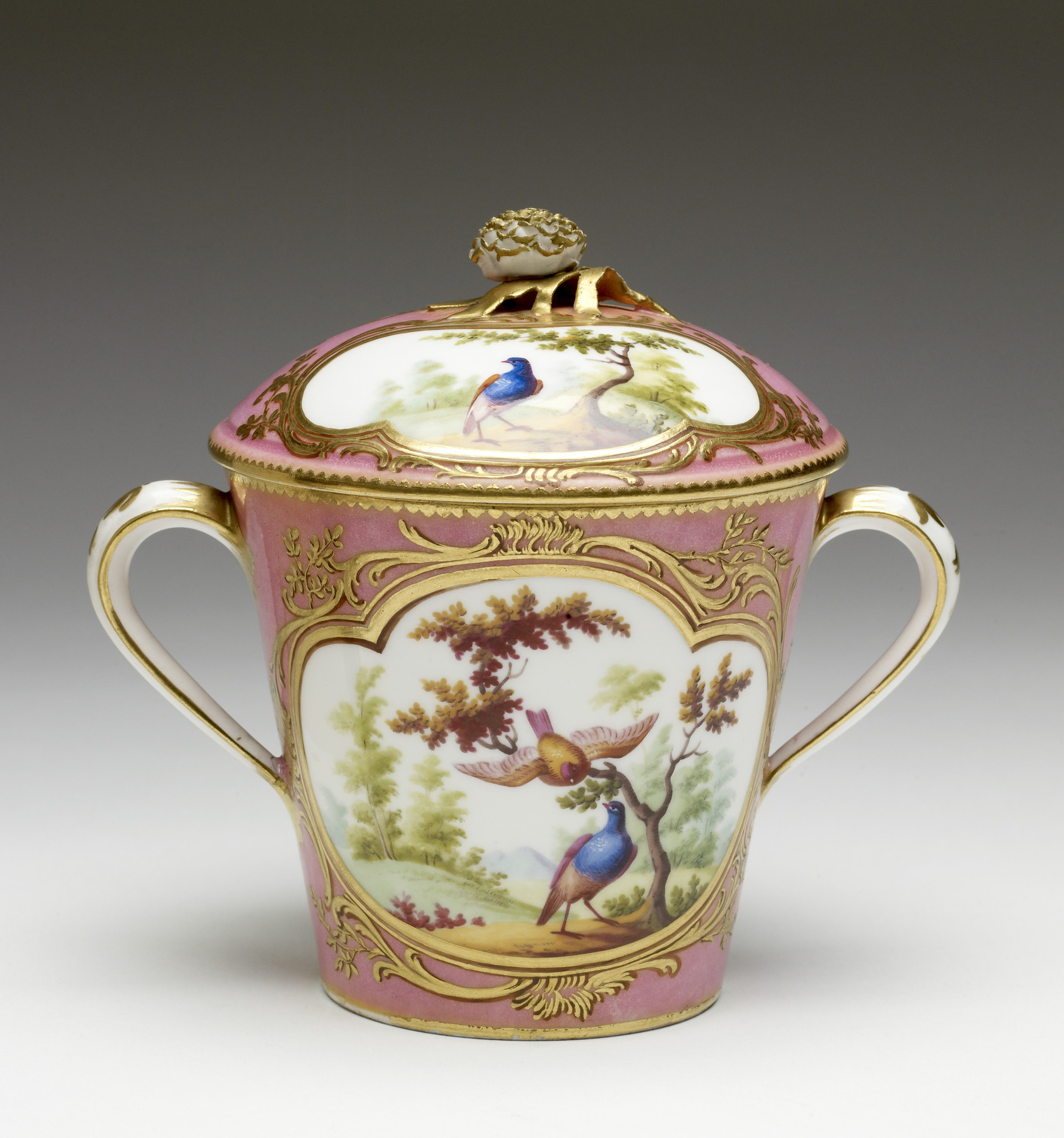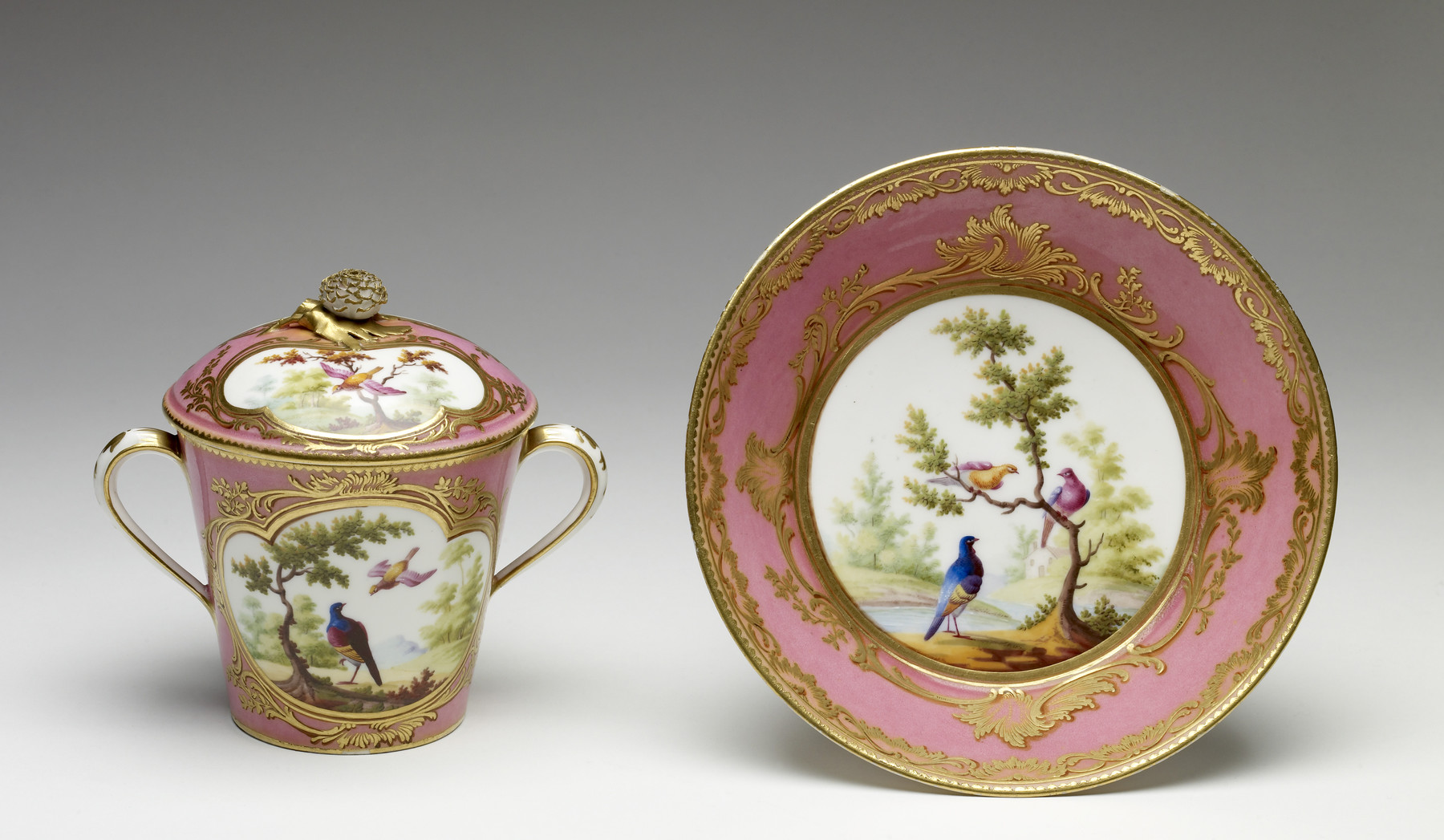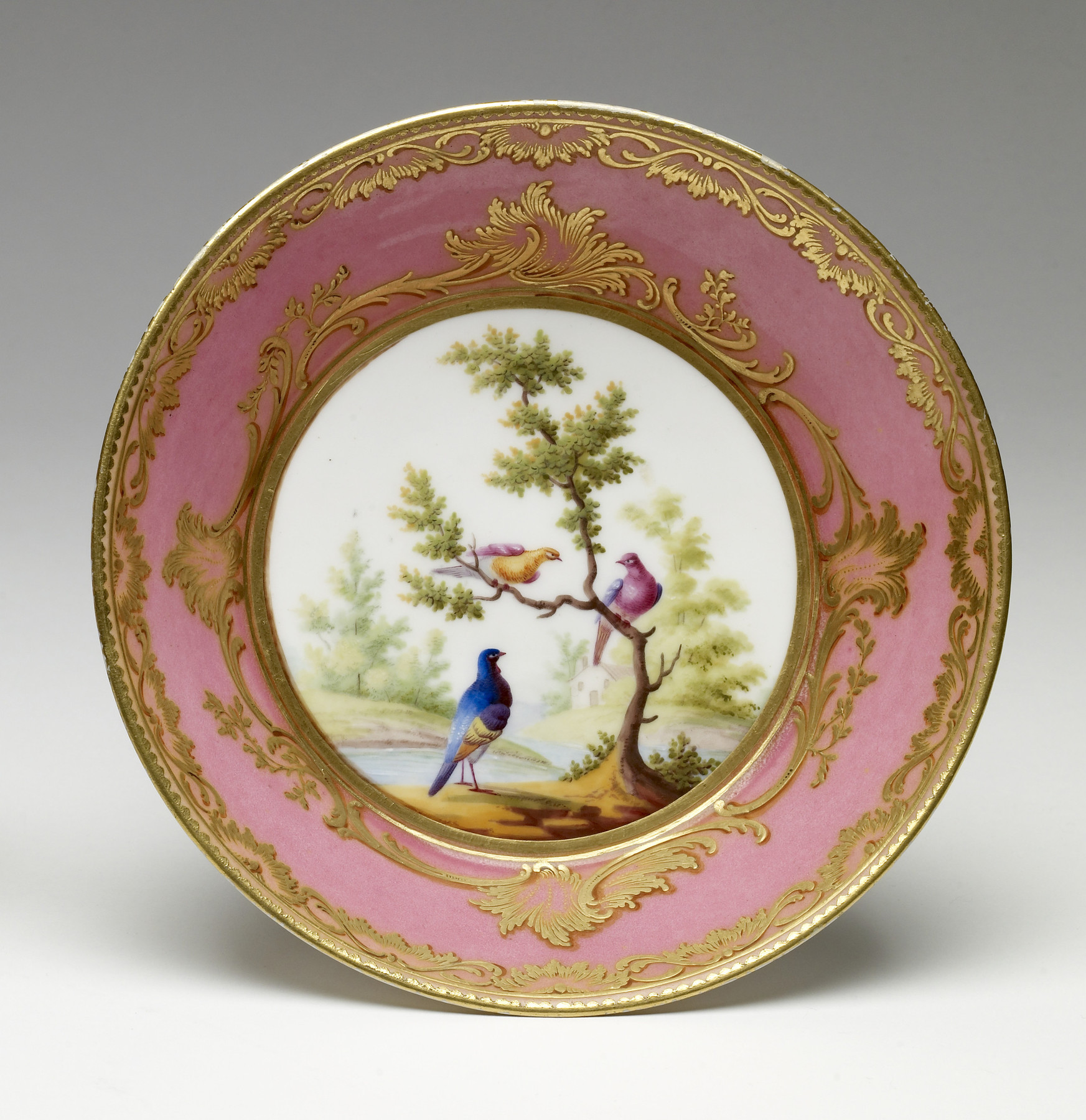Two-Handled Covered Cup and Saucer (Gobelet ‘à lait’ et soucoupe)
(18th and 19th Centuries )
This covered, bucket-shaped cup and saucer would primarily be used to serve hot and cold milk drinks that were prescribed to remedy fever, melancholy, and the effects of drinking too much alcohol. Warmed bread could be served in the deep saucer or, if the beverage was too warm, the milk cocktail could be poured into the saucer to cool. With a ground color of rose (roze), a glaze color developed by Sévres in 1757, this cup presents 4 kidney-shaped reserves, or blank areas reserved for imagery, filled with fantastical birds of paradise in picturesque landscapes. After firing, soft-paste porcelain pieces would be glazed in lead and then painters would ornament the surface. Painters could precisely render each detail, as soft-paste porcelain with an initial lead glaze absorbs all colors of glaze and produces a vibrant color field. Gilded frames, highlighted by carmine enamel, surround each reserve and border the edges of both cup and saucer, giving them a jewel-like appearance that would glimmer in the candlelit interiors of the eighteenth century.
Inscription
Provenance
Provenance (from the French provenir, 'to come from/forth') is the chronology of the ownership, custody, or location of a historical object. Learn more about provenance at the Walters.
E. M. Hodgkins Collection, Paris, no. 13; acquired by A. Seligmann, Rey and Co., New York; purchased by Henry Walters, Baltimore, 1928; by bequest to Walters Art Museum, 1931.
Geographies
France, Sèvres (Place of Origin)
Measurements
H: 5 1/16 x W: 7 1/16 in. (12.8 x 17.9 cm)
Credit Line
Acquired by Henry Walters, 1928
Location in Museum
Not on view
Accession Number
In libraries, galleries, museums, and archives, an accession number is a unique identifier assigned to each object in the collection.
In libraries, galleries, museums, and archives, an accession number is a unique identifier assigned to each object in the collection.
48.589










